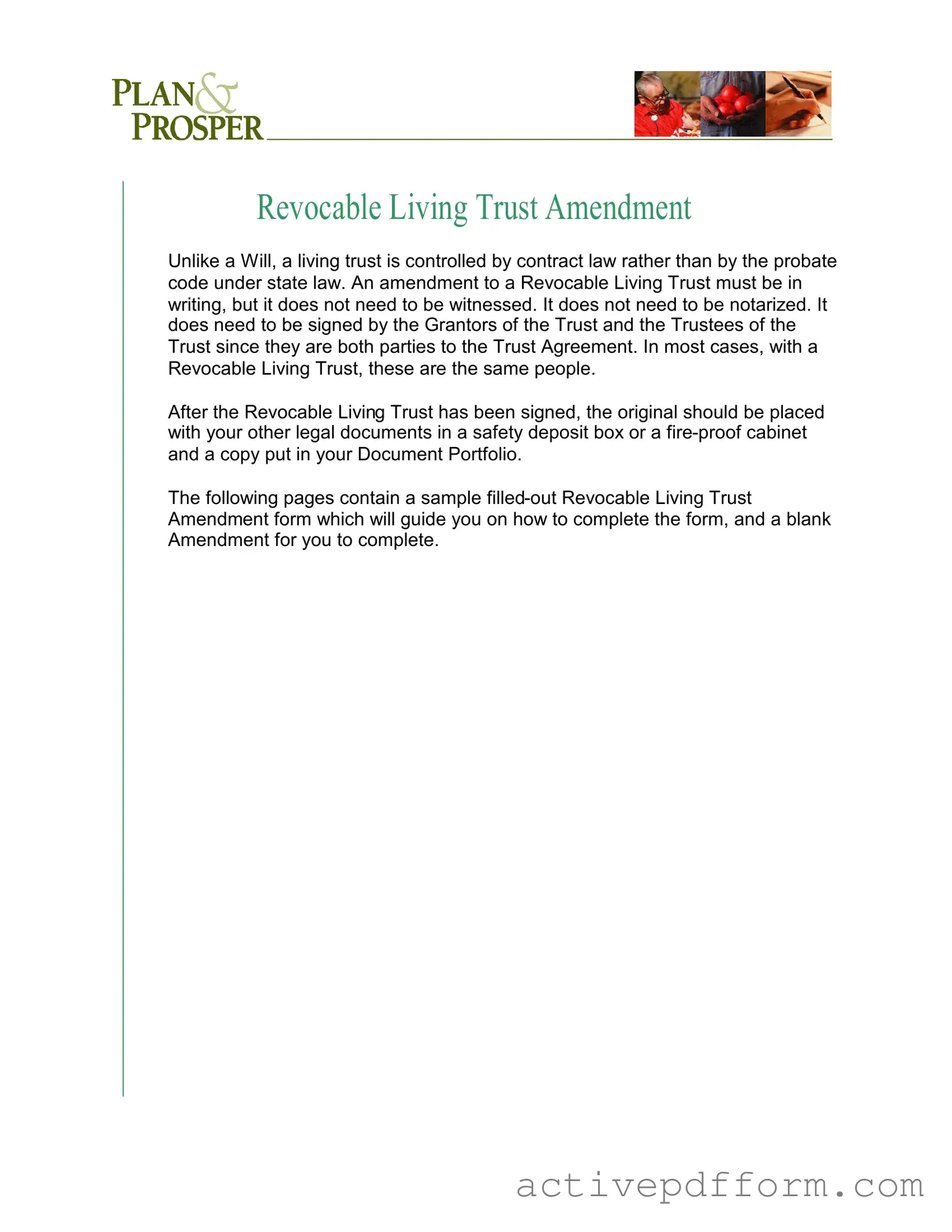What is a Trust Amendment form?
A Trust Amendment form is a legal document used to modify the terms of an existing Revocable Living Trust. Unlike a Will, which is governed by probate law, a living trust operates under contract law. This means that changes can be made more flexibly. The amendment must be in writing and signed by the Grantors and Trustees involved in the Trust Agreement.
Who needs to sign the Trust Amendment form?
The Trust Amendment form must be signed by the Grantors and the Trustees of the Trust. In most cases, these individuals are the same people. Their signatures indicate their agreement to the changes being made to the Trust Agreement.
Does the Trust Amendment need to be witnessed or notarized?
No, the Trust Amendment does not need to be witnessed or notarized. However, it is essential that it is signed by the Grantors and Trustees. This simplicity allows for easier modifications to the trust without the formalities required for other legal documents.
Where should I keep the original Trust Amendment?
The original Trust Amendment should be stored safely with your other legal documents. A safety deposit box or a fire-proof cabinet is recommended. Keeping it secure ensures that it can be accessed when needed, without risk of loss or damage.
What if I want to make multiple amendments to my Trust?
If you wish to make multiple amendments, each one should be documented with its own Trust Amendment form. This way, each change is clearly recorded and can be referenced as needed. It is important to keep all amendments organized and stored with the original Trust Agreement.
Can I revoke my Trust after making amendments?
Yes, you can revoke your Revocable Living Trust even after making amendments. The original Trust Agreement typically includes a provision that allows the Grantors to revoke the Trust in whole or in part at any time. This flexibility is one of the key benefits of a Revocable Living Trust.
Is there a specific format I must follow for the Trust Amendment?
While there is no strict format required, the Trust Amendment should clearly state the changes being made and include the necessary signatures. The sample form provided in the documentation serves as a helpful guide for structuring your amendment appropriately.
How can I ensure that my Trust Amendment is effective?
To ensure the effectiveness of your Trust Amendment, it is crucial to follow the guidelines provided in the Trust Agreement. This includes having the appropriate parties sign the document and storing it securely with your other legal documents. Regularly reviewing your Trust and its amendments can also help maintain clarity and effectiveness.
What happens if I don’t properly amend my Trust?
If a Trust is not properly amended, the changes you intended may not be legally recognized. This can lead to confusion or disputes among beneficiaries. It is always advisable to ensure that any amendments are documented correctly to avoid potential issues in the future.





